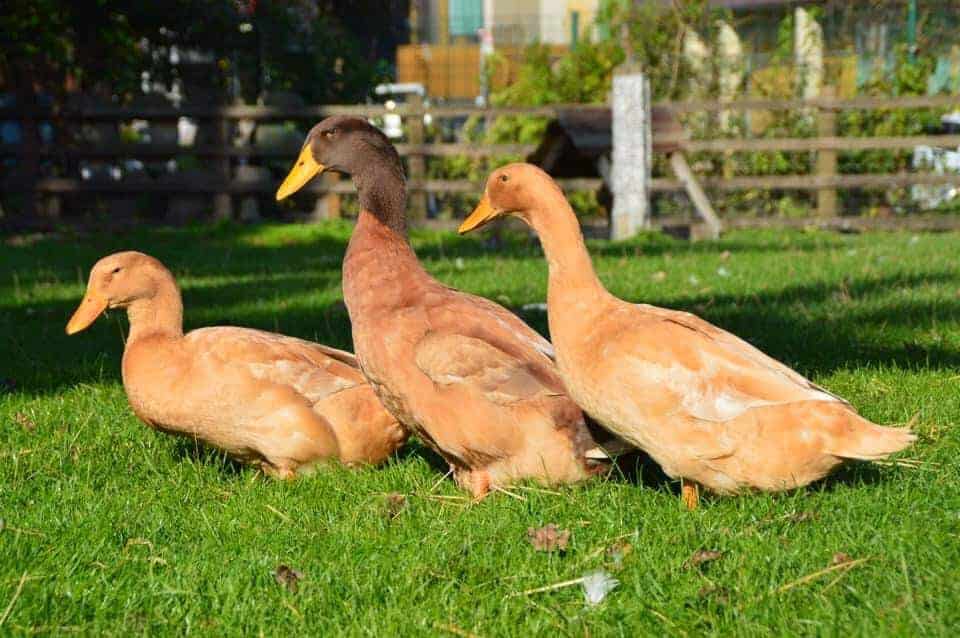Buff Orpington Duck

Scientific Name
Anas platyrhynchos domesticus
Alternative Names
Buff Orpington Duck, Buff Duck
Measurements
| Sex | Weight |
|---|---|
| Drake | 2.2–3.4 kg |
| Duck | 2.2–3.2 kg |
Status
Listed as a threatened breed by the American Livestock Breeds Conservancy (ALBC) and included on the Rare Breed Survival Trust Watch List.
Identification
A light, broad-bodied duck with an oval head, curved neck, and short, rounded wings. The plumage is soft buff—ranging from fawn-buff to seal-brown on drakes—with a yellow bill, orange feet and legs, and brown eyes. Ducks have slightly darker, brownish-orange bills. The bird carries itself at about a 20-degree angle above horizontal.
Voice
Soft, typical quacking similar to other domestic ducks.
Diet
General domestic diet of grains, greens, and small invertebrates.
Distribution
Developed in Orpington, Kent, England, and later introduced to the United States. Today it exists in small breeding flocks in North America and the UK.
Habitat
Domestic breed suited for farm or backyard environments with access to open water and foraging space.
Breeding
Created in the late 19th century by William Cook of Orpington, England, using Cayuga, Indian Runner, Aylesbury, and Rouen ducks. Introduced publicly in 1897 at the Dairy Show in London and recognized in poultry standards in Britain (1910) and the U.S. (1914). The breed exists in three color varieties—buff, blond, and brown—with the buff variety being the standard.
Conservation
By 2011, only 793 breeding birds were reported in North America, with five main breeding flocks remaining. Conservation programs encourage the preservation of pure buff lines due to their historical and genetic significance.
